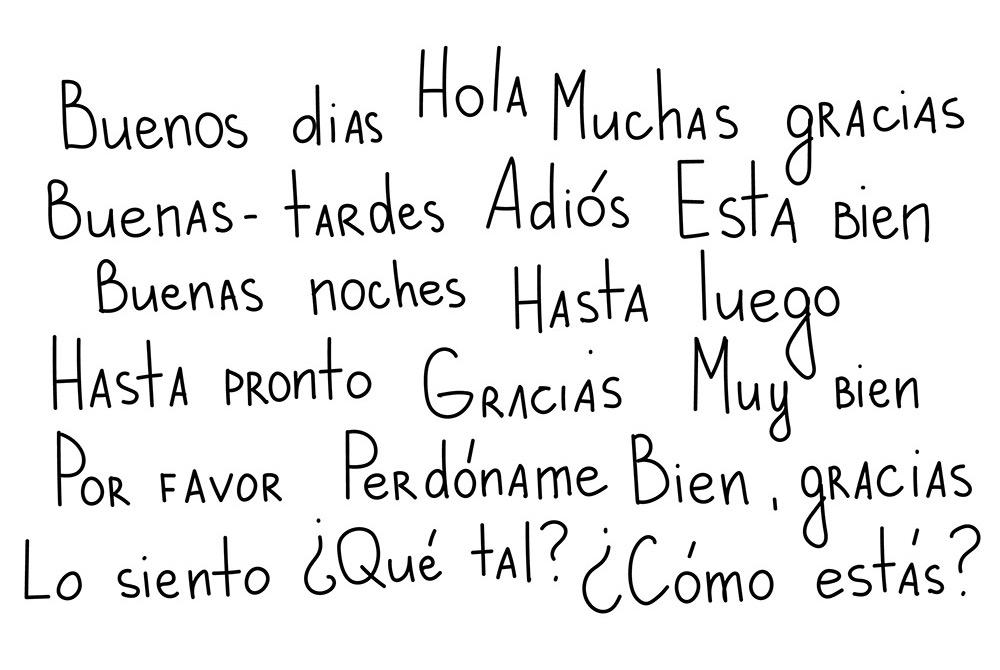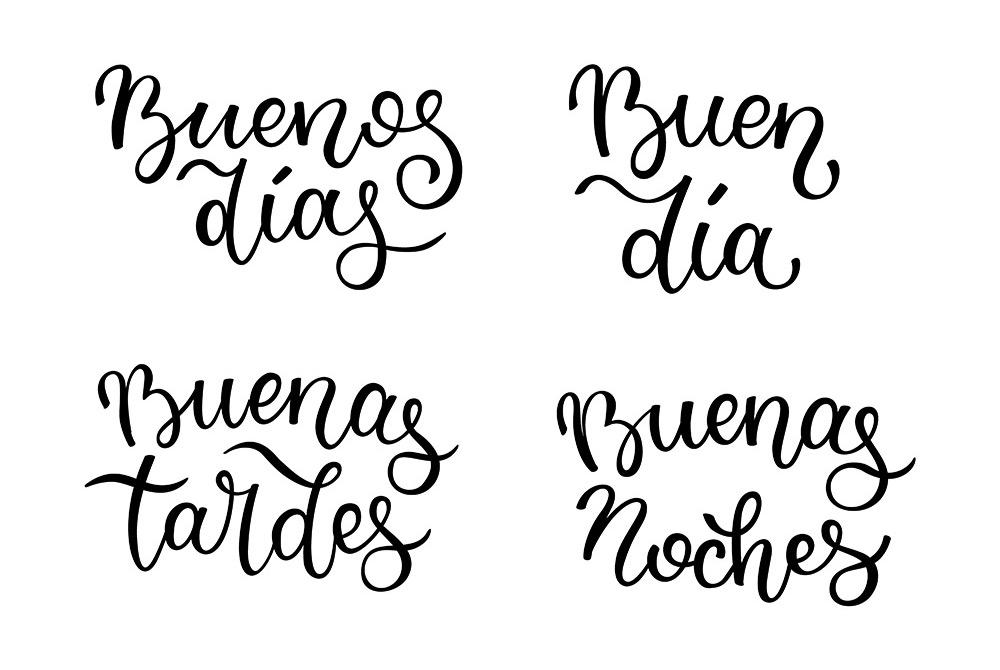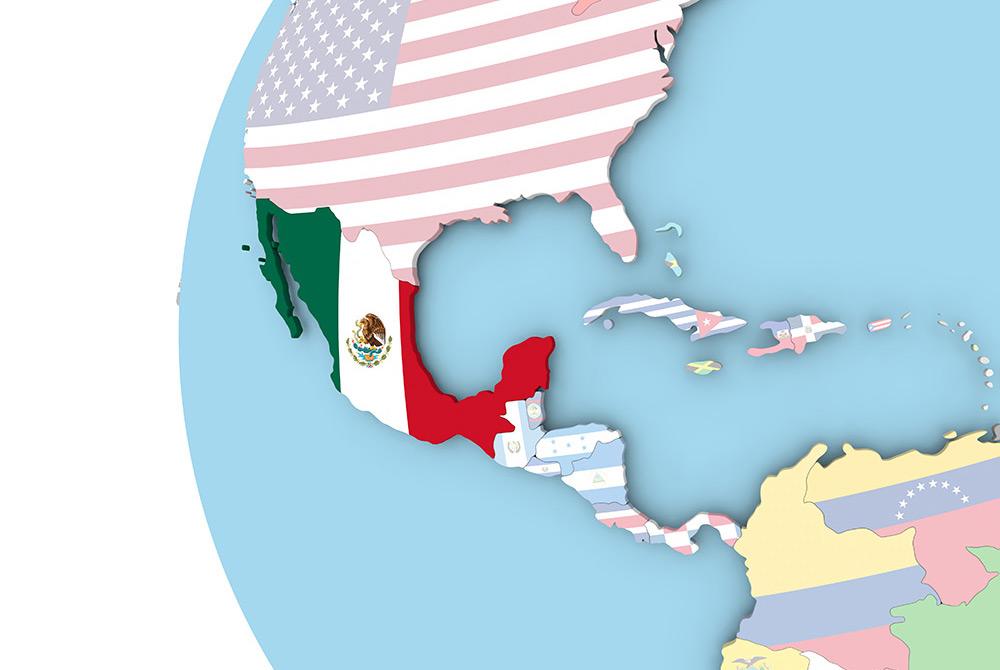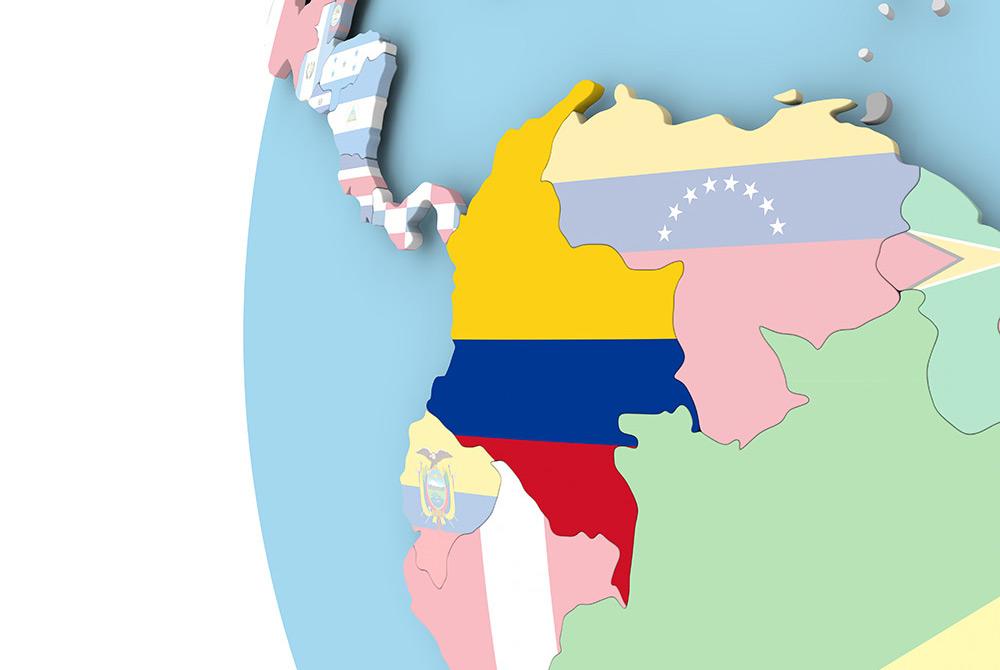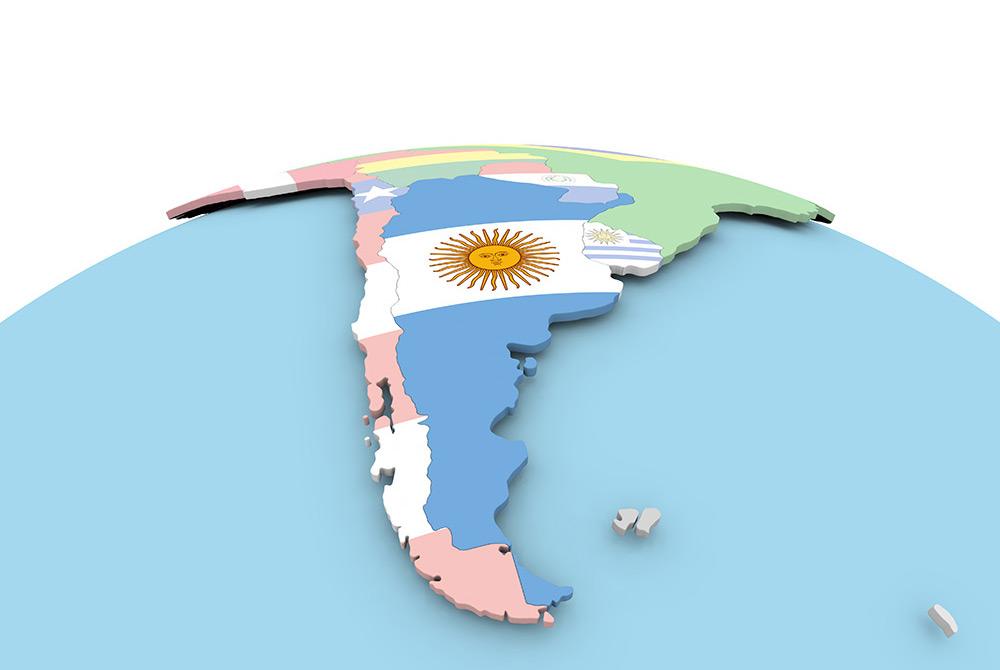Make yourself understood with these simple Spanish phrases
So, what are some basic phrases in Spanish?
Would you like to go on holiday to Spain or a Latin American country, but you don’t speak a word of Spanish? Do you struggle to deal with problems during your trips because you don’t know much Spanish?
Learn Spanish and you’ll be able to cope with whatever situation comes your way when you travel to a Spanish-speaking country. It’s never too late to start learning Spanish, and you don’t need to be bilingual to travel or to communicate in Spanish in a professional setting.
In the blog post, you’ll find useful phrases to help you communicate in Spanish and learn the language faster. Let’s start.
Basic Spanish phrases: Spanish, a language for everyone
For a Westerner, learning Spanish is far easier than learning Mandarin Chinese or Arabic.
In fact, Spanish is probably the easiest language for a French or Italian person to learn. You can get to a good level in a relatively short time.
Spanish is an easy language to learn because it’s a Romance language like Italian, Portuguese, Romanian and French. Because of this, many Spanish words resemble their counterparts in those languages.
We’ve summarised a set of useful Spanish words and easy phrases for you.
The basics are greeting and introducing yourself in Spanish. Let’s start there.
Basic phrases in Spanish: greeting someone
- “¡Buenos días!” if it’s the morning, “¡Buenas tardes!” if it’s the afternoon, and finally “¡Buenas noches!” if it’s night time.
- “¡Hola!” is a more informal way of greeting someone.
- To say goodbye: “Adiós”.
- “Hasta ahora” (See you later).
- “Hasta pronto” (See you soon).
- “Hasta mañana”. “Mañana” means both “the next day” and “morning” (part of the day before lunch) in Spanish.
- “Lo siento pero tengo que irme” (I’m sorry, I’ve got to go), “tengo que dejarte” (I’ve got to leave).
- “¿Podrías darme su número de teléfono/correo electrónico?” (Could you give me your phone number/ email address?)
- “Dale recuerdos a tus amigos” (Give my regards to your friends), “saluda a tus amigos de mi parte” (say hello to your friends for me).
You’ll notice that the Spanish language uses upside-down exclamation marks at the beginning of a sentence when there is an exclamation mark at the end. This rule also applies to question marks.
These are phrases you can use to introduce yourself to someone
- “Me llamo Daniel”. (My name is Daniel)
- “Bienvenido”. (Welcome)
- “¿Cómo se llama?” (formal), “¿cómo te llamas?” (informal) (What’s your name?).
- “Soy americano/italiano” (I’m American/Italian). “Soy inglesa/francesa” (I’m English/French).
- “¿De dónde es?”, “¿de dónde es usted?” (formal), “¿de dónde eres?” (informal) (Where are you from?).
- “Soy de Lyon” (I’m from Lyon).
- “Este es el señor Martín”, “le presento al (señor) Martín”, “le presento a Martín”. These are formal phrases. “Te presento a Martín” (informal) (This is Martin).
- “Este es mi marido” (This is my husband), “esta es mi mujer” (this is my wife). ‘Mujer’ is more commonly used than ‘esposa’ to mean ‘wife’.
- “Encantada de haberle conocido”, “encantada de conocerle” (formal). You can simply say “encantado” if you’re a man or “encantada” if you’re a woman.
- “Fue un placer conocerte”, “me encantó conocerte” (It was nice to meet you).
- “¿Cuántos años tienes?” (How old are you?).
- “Tengo 19 años” (I’m 19 years old).
- “Igualmente” (Likewise), “yo también”(me too).
Basic Spanish phrases: phrases and words that are used in most conversations
- “Sí”. (Yes)
- “No”. (No)
- “Por favor”. (Please)
- “Muy bien”. (Very good / OK)
- “Muchas gracias”. (Thanks very much)
- “No hay de qué”, “de nada”. (No problem / you’re welcome)
- “Perdón / disculpa”. (Sorry / excuse me)
- “¿Y usted?” (formal) (And you?), “¿Y tú?” (informal) (And you?).
Basic Spanish phrases: asking questions
- “¿Me podría ayudar a…?” “¿Podría ayudarme a…?” (Could you help me to…) (formal). “¿Me puedes ayudar?” (Can you help me?) (informal).
- “¿Tiene sal?” (formal) “¿Tienes sal?” (informal) (Do you have any salt?).
- “¿Qué hora es?” (What time is it?)
- “¿Hay…?” “¿Hay algún…?” (Is there…?)
- “¿Dónde está el metro?” (Where’s the metro?), “estoy buscando el metro” (I’m looking for the metro).
- “¿Dónde se compran los billetes?”, “¿Dónde se compran las entradas?” (Where do you buy tickets?)
- “¿Qué es esto?”, “¿Qué es?” (What’s this?)
- “¿Cómo?”, “¿Qué?” (What?)
Basic Spanish phrases: making requests
To say you want something: “Quisiera…” / “Me gustaría” (I’d like…).
Make sure you pronounce these phrases correctly in Spanish.
Basic Spanish phrases: understanding and being understood
To explain that you don’t speak Spanish very well and don’t understand what someone is saying:
- “Hablo solo un poco de español” (I only speak a little Spanish). “No hablo español” (I don’t speak Spanish).
- Ask permission to ask a question: “¿Le puedo hacer una pregunta?”.
- Ask someone to repeat more slowly: “¿Podría repetirlo más despacio, por favor?”. Or even simpler: “¿Puede repetirlo?”
- “No he oído lo que ha dicho”. (I didn’t hear what you said). Get your Spanish teacher to repeat their sentences in class!
Basic Spanish phrases: how to ask for directions in Spanish
Strolling through the streets of Spanish cities is a wonderful experience.
When you want to ask a Spanish speaker for directions, you can say:
- “¿Perdone, me puede indicar cómo ir al metro/al centro?”, “disculpe, ¿podría decirme cómo llegar al metro/centro de la ciudad?” (Excuse me, could you tell me how to get to the metro/city centre?).
- “¿Estoy perdido, me puede ayudar?” (I’m lost. Could you help me?).
- “¿Dónde está el supermercado?” (Where’s the supermarket?).
- “A la derecha” (right). “A la izquierda” (left). “Todo recto”, “de frente” (straight ahead). “Al lado de”, “junto a” (next to).
Basic Spanish phrases: on the bus, train or plane
Travelling (by bus, train or plane):
- “Quisiera un billete para Madrid, por favor”. (I’d like a ticket to Madrid, please).
- “¿A qué hora sale el autobús/tren/avión para la playa?” (What time does the bus/train/plane leave for the beach?).
- “¿Dónde puedo comprar los billetes?” (Where can I buy tickets?).
- “¿Dónde está la estación de tren más cercana?” (Where’s the nearest train station?).
- “¿Dónde está la taquilla?” (Where’s the ticket office?).
- “¿Dónde está la parada de autobús?” (Where’s the bus stop?).
- “Un billete sencillo”, “un billete único” (a single ticket). “Un billete de ida y vuelta” (a return ticket).
- “¿Puede darme los horarios?” (Can you give me the timetable?).
- “¿En qué dirección debo ir?” (Which direction should I go in?).
Basic Spanish phrases: in a hotel and restaurant
- “¿Tiene una habitación libre, por favor?” (Do you have a spare room, please?), “¿Tiene una mesa libre, por favor?” (Do you have a free table, please?).
- “Quisiera/me gustaría reservar una habitación para 3 personas”. (I’d like to reserve a room for 3 people).
- “Quisiera alquilar une habitación /una casa/un apartamento durante 7 días”. (I’d like to rent a room/a house/an apartment for 7 days).
- “¿Qué restaurante me recomienda en la zona?” (Which restaurant would you recommend in the area?).
- “Una cerveza/un café/una copa de vino/agua sin gas, por favor” (A beer/coffee/glass of wine/still water, please).
- “¿Nos podría traer la cuenta, por favor?” (Could you bring us the bill/check, please?), “¿Podría darme la factura, por favor?” (Could you give me the bill, please?).
- “¿Dónde se encuentran los servicios?”, “¿Dónde están los baños?” (Where’s the bathroom?).
To memorise these phrases, you’ll have to repeat them several times. If you’re prepared to work hard, you can learn useful Spanish words and phrases in just a few weeks!
Watch Spanish movies to get used to the Spanish accent and how people express themselves in the language.
If you want to take your Spanish further, you’ll have to spend additional time studying verb conjugations.
Verb conjugations in Spanish are complex, just like the history of the language. They work in a similar way in many other European languages (not English, as it has a much simpler verb conjugation system). Verb conjugations are probably the most difficult aspect of the Spanish language.
Basic Spanish phrases: other situations
Here are some more useful phrases:
- “¡Estuvo muy bien! (It was really good!) To talk about a show, for example.
- To say you like something: “Me gusta”. If you like more than one thing: “Me gustan”. To say you don’t like something: “No me gusta/an”. “No me gusta(n) mucho”.
- “Estoy de acuerdo contigo/usted” (I agree with you). “No estoy de acuerdo” (I don’t agree with you).
- “Me gustaría (ir al teatro/cine/restaurante…)”. (I would like…to go to the theatre/cinema/restaurant…).
- “Para mí no es una buena idea”. (In my opinion, it’s not a good idea).
- “No entiendo”. (I don’t understand). Or “Disculpe, pero no he entendido”. (Excuse me, I didn’t understand).
- “No, gracias”. (No thanks).
- “Lo siento mucho”. (I’m really sorry).
- “No pasa nada”. (No problem).
- “¡Enhorabuena!”. (Well done!).
Basic Spanish phrases: Latin American Spanish
Centuries of independence from Spain have led to the emergence of different words, accents, phrases and intonations in the Spanish spoken in Latin America.
In this part of the world, which is known for its welcoming and friendly people, the use of “usted” is commonplace (unlike in Spain).
Instead of using the “vosotros” verb endings “eis” and “ais”, which sound strange to a Latin American person, the third person plural form of the verb is used.
For example, instead of “¿Cómo estáis?”, they say “¿Cómo están?”. This form is used whether you are trying to be polite or not.
In general, “usted(es)” in Spain is only used out of courtesy, for example, when we don’t know the person we’re talking to or in a professional work setting, etc. Latin Americans, however, use it during family and informal settings.
For the record, “gringo” and “ay caramba” are only used in Latin America.
Expressions used in Mexico
Mexico is known around the world for its spicy cuisine, Mayan civilization, the beautiful Cancun beaches, Playa del Carmen, and Tulum. It’s home to a particular variant of Spanish (apart from the tourist spots in Yucatan where English is spoken).
Mexican Spanish accent differs considerably from the accents found in Madrid and Andalusian towns.
In Mexico, the word “madre” is used in many different expressions, some of which are vulgar.
On the other hand, while North Americans are referred to as “gringos”, French people are called “franchutes”.
Mexican Spanish is unique in that the “R”s are rolled particularly strongly, which is often caricatured by Latin Americans and Mexicans themselves.
Ask a Mexican person to say “Ecuador” and they’ll say “Ecuadorrrrrrrrrr”.
Another important difference is the speed at which the language is spoken; in Mexico, you’ll notice how people take their time to speak and articulate and accentuate each word.
Mexican Spanglish
The history and conflict between Mexico and the United States of America, their geographical proximity to each other, and Tex-Mex cuisine have all influenced Mexican Spanish vocabulary.
Mexico, like Puerto Rico and the Dominican Republic, has adopted several English words into its language. Here are some examples of what linguists now call “Spanglish:
- To rent: “rentar” (instead of “alquilar”).
- To check: “checar” (instead of “comprobar”).
- A car: “un carro” (instead of “un coche”).
- A truck: “una troca” (instead of “una furgoneta”).
Mexican Spanish words
- “¿Mande?”: ¿Qué?
- “¡No manches!”: slang for “increíble”.
- “Órale”: a multi-purpose word that Mexicans use to say “es increíble”, “apúrate”…
- ¡Está padre!” is slang for “¡es genial!”
- “¿Qué onda?” /”¿Qué pasó?”: Mexican version of “¿qué pasa?”.
- “Fresa”: snob, burguesa.
- “Gringo(a)”: nickname for North Americans.
- “Guero(a) (or huero)”: refers to someone blonde/ with fair skin.
- “Guey”: same as “amigo”.
Finally, we’re going to look at the word “ahorita”. It means “now (ahora)” and is sometimes used to mean just that. However, it’s also used frequently to mean “voy a venir (I’m coming….in the future, but I don’t know when)”.
This is an important concept to grasp because it can be embarrassing to wait for someone who has told you “ahorita vengo”.
Simple Spanish phrases to use in Colombia
Colombia is a region of Latin America known for its linguistic richness.
The Spanish used in Colombia differs from region to region and is heavily influenced by the different ethnic groups found there.
Unfortunately, the country is most famous on an international scale for its drug cartels and Pablo Escobar, which are clichés reinforced by the Narcos series. Indeed, Colombia isn’t known for its linguistic virtues.
However, from Bogotá to Cartagena and Medellín, Colombian Spanish has a very clear pronunciation and is one of the purest forms of Spanish in Latin America.
Colombian Spanish is a very musical language influenced by many ethnic groups.
Just like in Mexico, “usted” is used to establish a formal conversation. Surprisingly, two friends who are arguing will use “usted” to insult each other.
Very few Anglicisms are used in Colombia. However, a wide range of expressions is used. These are the most common examples:
- “No dar papaya”: “no tomar, no correr el riesgo” (not take the risk). It’s a common saying in a country that has high levels of violence.
- “¿Qué más?”: means “¿qué pasa?”, “¿de qué hablas?
- “¡Qué pena!”: means “qué dolor” or “qué vergüenza”. In Colombia, it’s used all the time to apologise, to interrupt someone, to hurry someone up, to ask for a favour, or to annoy someone. Pretty polite, right?
- “Que esté bien” / “Que le vaya bien” / “Que descanse”: a polite way to say goodbye.
- “¡Qué mamera!”: means “qué pereza”.
- “¡Listo!”: means “¡bien!” (although literally, it means “ready”).
- “Hágale” is used in many different contexts. It means “vale” or is used to encourage someone to do something.
- “A la orden”: means “a su servicio” and “por favor”. You hear it used by street vendors everywhere.
- “Parcero/parce/güevón/(her)mano”: Colombian versions of “mi amigo”.
- “Hágame un favor”: (imperative) to ask a favour
- “¡Chévere! / ¡Bacano! / ¡Qué chimba!”: Colombian ways to say “¡genial!
- “De una”: an expression that means “¡vamos!”.
- “Guayabo”: resaca (hangover).
- “Prendido”: Colombian version of “achispado” or “tipsy” in English.
- “Bobo”: (stupid). Sometimes it’s used like this: “no seas bobo”.
- “¡Un tipo!: un hombre (a man).
- “Regálame”: means “véndeme” or “dame”.
- “Una pola”: (a beer) (only in some parts of Colombia).
- “Re”: “muy”. It’s always used as a prefix like “re-chimba”.
Basic Spanish phrases to use in Argentina
Argentinian Spanish is easily recognisable. Its originality lies in the pronunciation and use of certain words.
Argentina is the only country in Latin America where the “LL” is pronounced “ch”.
Argentinian Spanish is different from both European Spanish and other types of Latin American Spanish:
- It’s spoken almost as quickly as Spanish in Spain (unlike in Mexico and Colombia).
- It’s spoken with a singsong intonation similar to Italian. This is due to Italian immigration to Argentina after World War II.
The originality of Argentinean Spanish lies predominantly in the unique pronunciation of certain letters.
The “ch” sound is used as a rule by Argentinians from Buenos Aires to Iguazú whenever there is “LL” or a “y” in the word.
For example, you’ll often hear “la cache” and “como se chama” instead of “la calle” and “como se llama”.
On the other hand, Diego Maradona’s country once again stands out in its use of Spanish grammar. In Argentina, “vos” is used instead of “tu”, and the “vosotros” form that is used in Spain is replaced with “ustedes”, like in the rest of Latin America.
As for vocabulary, there are certain words you should avoid using until you’re sure you know what they mean!
- “Aguantar”: apoyar/apoyar a alguien (to support/ to support someone).
- “Asado”: barbacoa (BBQ).
- “Bancar”: apoyar, ayudar, pagar, dar (to support, to help, to pay, to give).
- “Birra”: cerveza (beer).
- “Boliche”: disco (nightclub).
- “Boludo”: idiota (idiot) (used both affectionately among friends and to insult a stranger).
- “Bondi”: autobús (bus).
- “Botón/Cana”: policía (police officer).
- “Chabón/Chabona”: niño, chico/chica (child, boy/girl) (affectionate).
- “¡Che!”: (a typical expression to get someone’s attention).
- “Chorro”: ladrón (thief).
- “Copado”: buena onda (good vibes, cool).
- “Coparse”: adorar (to adore).
- “Fiaca”: pereza (laziness).
- “Guita”: dinero (money).
- “Hinchapelotas”: plaga (annoying person).
- “Laburo”: trabajo (work).
- “Macanudo”: genial, impresionante (great, impressive).
- “Mango”: peso, plata (coins) / 1,000 pesos (money).
- “Mina”: chica, nana (girl, woman).
- “¡Mira vos!”: a way of expressing surprise or bewilderment.
- “Morfar”: comer (to eat).
- “Mozo”: (waiter)
- “Palo“: 1 million pesos.
- “Pancho”: “perro caliente” (hot dog). You’ll find many in Buenos Aires.
- “Pibe/piba”: chico/nana (boy/girl). Diego Maradona is known as the “pibe de oro” (“golden boy”).
- “Pucho”: cigarrillo (cigarette).
- “Quilombo”: caos, lío (chaos, mess).
With these few basic Spanish phrases, you should be able to make yourself understood and communicate in Spanish. Get studying!
You can also take Spanish classes if you have time to learn more. Check out our in-person and online courses here.

